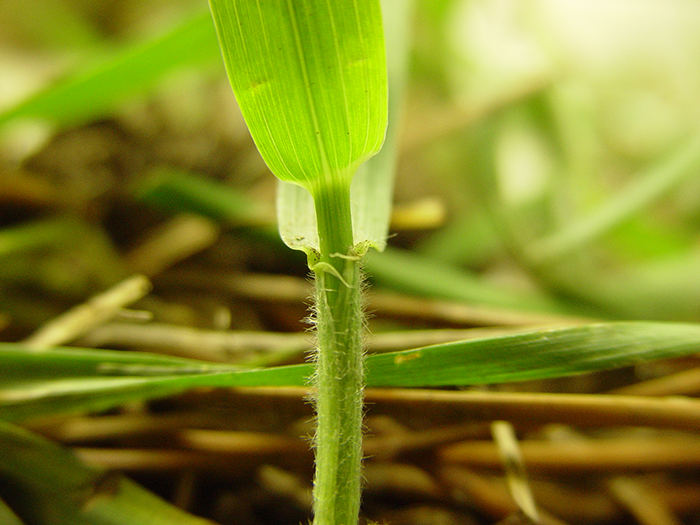
Quackgrass is one of those species that is accepted by some and rubs others the wrong way. Whatever side of the fence you are on, there is no denying that the so-called weed has some redeeming forage qualities.
In a recent article from the Midwest Forage Association’s Clippings newsletter, Craig Sheaffer, Troy Salzer, and Roger Becker with the University of Minnesota state that herbicide applications and crop rotations have significantly reduced quackgrass pressure in crop fields and the negative effects it previously had on yields. The extension educators continue to note some of the positive characteristics of the perennial cool-season grass.
“When quackgrass is found in permanent pastures and hayfields, its attributes as a forage should be considered,” the authors write. “Its elimination may not always be desirable because it can contribute forage yield, nutrient recycling, and soil health.”
Rhizome rebel
Quackgrass has a tall growth habit and is identified by the hooked auricles around its leaf collars. It has a spike-type seedhead and can produce 100 to 400 seeds per plant. The authors note this is relatively low compared to other species like pigweed that can produce up to 200,000 seeds per plant. Quackgrass can also reproduce asexually via rhizomes.
Quackgrass rhizomes can grow as much as 1 inch per day and stretch up to 3 feet long. If rhizomes are cut or severed by harvest or tillage equipment, shoots can develop from rhizome nodes and develop into new plants.
This robust system of roots and rhizomes gives quackgrass a lot to offer in terms of erosion control. In fact, some quackgrass biotypes were historically selected for their use in soil conservation and land stabilization across the Gopher State. Aggressive rhizomes can also make quackgrass an asset to nutrient recycling on effluent application sites and in fields where farmers spread manure.
“Under effluent application, quackgrass has the greatest persistence and similar nitrogen uptake and forage yield as other tall-growing grasses — except reed canarygrass,” the authors say. “Because of its spreading rhizome growth with associated roots, it can intercept and uptake phosphorous and potassium from the soil.”
Despite this, quackgrass is a restricted noxious weed seed in Minnesota, and its presence in forage seed bags must be named on the label. Quackgrass seed cannot exceed 25 seeds per pound of the sold seed; however, it may still be prevalent in pastures and hayfields.
Supportive statistics
Quackgrass yield and quality resemble that of orchardgrass and reed canarygrass. In a study where different varieties of the perennial plant were harvested three times during a growing season, average total yield was between 4.8 and 5.2 tons per acre.
In the same study, relative feed value (RFV) of the quackgrass varieties averaged 98 and 100. These plants also had 57% to 58% neutral detergent fiber (NDF) compared to reed canarygrass (54%) and orchardgrass (56%). Moreover, quackgrass had 16% to 17% crude protein (CP), which was slightly less than the 18% CP and 17% CP of reed canarygrass and orchardgrass, respectively.
“Similar to other forage grasses, quackgrass forage yield and forage quality is affected by harvest maturity,” the authors state. “Harvesting at less mature stages results in higher forage quality but lower yields. Maximum seasonal yields can be achieved by making a first harvest at flowering with subsequent cuts at about 40-day intervals.”
Overall, quackgrass demonstrates weedy characteristics that might make it less than desirable, but it still has some merit as a solution to soil erosion, nutrient cycling, and can contain considerable feed value.

